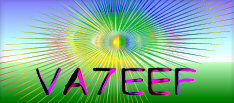
Emergencies come in many forms, and they may require anything from a brief absence from your home to permanent evacuation. Each type of disaster requires different measures to keep your pets safe. The best thing you can do for yourself and your pets is to be prepared. On the west coast, we think about earthquakes. When preparing for the big one, don't forget the needs of your pet! With our Stella on the way, we have re-evaluated our emergency supply list. Read more to see the entire list.
EMERGENCY PREPAREDNESS
On Vancouver Island, we are mainly concerned with earthquakes.Always fill your gas tank when it is half empty. After an earthquake, gas station swill either be closed or the gas will be for emergency vehicles. Keep a bag of supplies near your bed. If you are awakened in the middle of the night and told to evacuate, you can grab your bag and your animals and go.Suggestions:
• Heavy gloves and shoes (for broken glass)
• A flashlight and batteries (always store batteries in a sealed plastic bag)
• 5 gallon containers and add four drops of chlorinated bleach for every gallon of water, then change the water every six months).Water - fill an empty 2 litre bottle from the tap (Keep lots more stored outside in
• Food - both for people and pets • Waterproof matches and candles
• great to keep warm & dry (enough for people and animals)Orange garbage bags & silver emergency blankets — these are highly visible &
• One week’s worth of your medication & any your animals require
• Leashes — your pets should always be wearing collars with tags
• vaccination records, driver’s license, birth certificate etc.Laminated copies of important papers such as your pet’s registration papers,
• Quarters for pay phones and small bills for miscellaneous expenses
• Extra keys to your vehicle(s) and your home
• A first aid kit & instructions with supplies for you and your animals
• a place to stay for you and your pets. A list of phone numbers of out-of-town friends and relatives that could provide
• Extra supplies to be kept in a safe location outside (wheeled garbage cans are ideal)Photos of your animals in case they get lost, pen & paper for signs
• Radio and batteries
• Tarps and rope
• A crowbar, hammer, nails, axe, folding shovel
• More food for the animals (canned is best as it lasts longest) & a can opener
• Blankets, towels and extra clothing for people and animals
• Contact a neighbour or friend who could evacuate your animals for you if you aren’t home. For more information on emergency preparedness contact your local municipal hall.
• Crates for each dog

